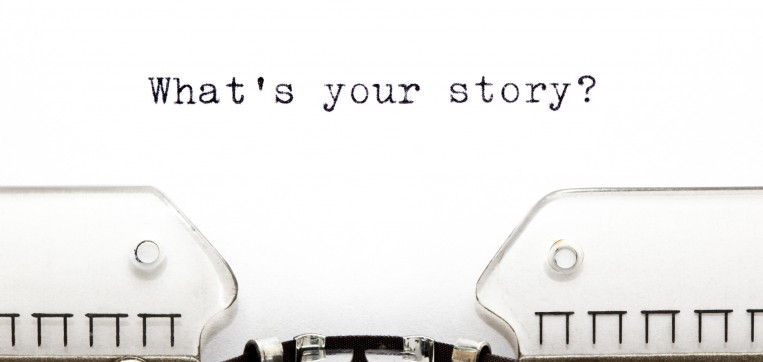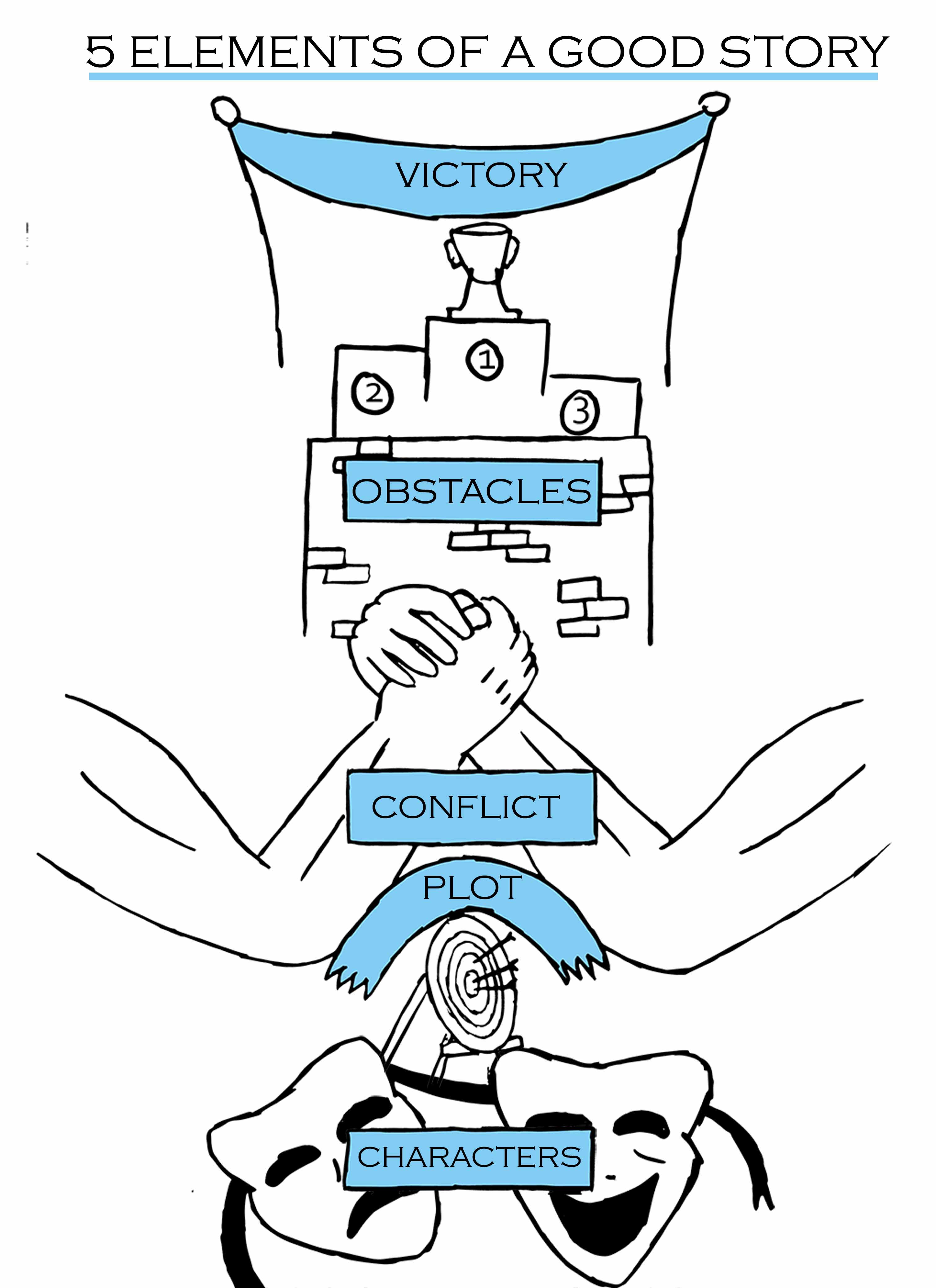
- Posted by info 03 Mar
USING STORYTELLING UNIVERSALS TO MAKE IDEAS UNIQUE
Stop me if you’ve heard this one before.
All stories, no matter how much we laud them for their uniqueness and originality boil down to several key universal factors. This is true for feature films, novels, music videos, adverts, promotional videos, urban legends, fairy tales, documentaries, or anything that tells a story. However, there are also rules for using these universals in an advanced way, and using them to make more interesting stories.
We’ve blogged about storytelling for business in the past, so what we’re trying to do here is create something that will still be helpful to businesses, but which has a much broader appeal, and which will also be helpful to students, artists, or anyone who is interested in stories. We think there are some very interesting lessons that can be learnt from seeing how these universals can be used to improve individual stories, but also apply to all sorts of platforms of storytelling.
Let’s begin:
Character and Advanced Situations
Characterisation and plot are the two most key aspects of storytelling. Once you have a person with motivation who goes on a journey, you have a story, no matter how rudimentary it may be.
Zaid grumpily went to his shed to fix a wheel and then cycled home. That’s a story. Arguably not a very gripping story, but technically a story nonetheless. It meets the barest requirements to constitute a fictional narrative that ties in a character, his feelings, and a situation with a resolution.
With that dull story in mind, how can we create something that is more interesting to an audience? You may say more length, and more things happening, but that is wrong. If you think of a TV advert, which is often 30 seconds in length, Zaid’s actions are if anything more than enough to fill this time. Conversely, you can tell the story of the entire world’s evolution in the space of an advert. So with the ability to create something that can span as long or as short a timeframe as necessary, how do you make the story interesting and stand out? The answer is to give your character an advanced situation.
An advanced situation is a plot that puts an interesting spin on typical dull storylines or takes them in new and unexpected directions. It is the thing that makes a story unique. Too many adverts go no further than running with a plot that goes “character has a problem, character’s life is bad, character gets new product, and now character’s life is good forever.” It does the task of promoting the product in the most typical fashion possible, however, this is too simplistic to work as a good story, or make any long lasting impact. Advanced situations look at these dull typical situations, and make them interesting.
An advanced situation can take many different forms; it can create an original meerkat character whose situation is that people keep on mistaking his website for something similar sounding but completely different, it can show a person so desperate for good salmon that he resolves to fight a bear in a faux documentary presentation, it can make a story of an old man on the moon who is lonely at Christmas so connects to a young person through a telescope, and so on. I have used advertising examples above; as advertising is the platform where you can most easily observe these spins on the norm, however creating an advanced situation applies to so many different forms of storytelling.

Source: http://www.precedent.com/images/articles/june-14/compare_the_meerkat_site
The world is jam packed with stories. When was the last time you met someone who has read all novels, seen all TV series, seen all films? No one can hope to experience them all. Therefore to give your story the most chance of being recognized it needs to give the most unique spins on recognizable situations as possible. Before Harry Potter people had created coming of age boarding school stories, and stories with witches and wizards, but Harry Potter was the first one to advance the situation by showing an outsider come of age in a wizard and witching boarding school, making something original out of two familiar stories. Before Star Wars there had been science fiction stories, but none advanced the situation by creating as realistic, exciting, and believable a world for Luke Skywalker to come of age in as the one that the series is set in.
Once it is understood that giving characters advanced situations are the key to both successful and original storytelling it becomes easier to make something stand out. It still needs original creative thought and time to perfect, but understanding how makes it easier to do.
Coming up with advanced situations for characters may sound like the tired old metaphor “thinking outside the box”, but really it is a different process. It is taking the box, modifying it and putting it to a different use.
Original Metaphors
The previous paragraph used both an established metaphor, and then created a new metaphor out of the old metaphor. That wasn’t an accident.
Metaphor is hugely important. Some people think it is just a flourish of language, however many linguists, psychologists and cognitive scientists (such as George Lakeoff, Mark Johnson and Steven Pinker) have provided evidence that suggests that metaphor has a much deeper connection to making humans human. It is a complex theory, but boils down to the idea that the human brain first developed through its ability to associate one thing to another thing, birthing all abstract thought. For example cavemen would have thought “Rubbing hands makes my hands warm, but hurts eventually. What if I rubbed these sticks together, which get warm but don’t hurt? Would they get so warm they stayed warm?” which created fire. The caveman is so happy he experiments with seeing what other things are like other things, using mental metaphors to do this.
With metaphor being such a key part of how the mind works it isn’t surprising that metaphor is used so thoroughly in stories, and in fact many stories are often cited as being a device to convey one large metaphor, or as we more commonly associate it a moral or message.
The storytelling platform that uses metaphor most blatantly is probably song. Song lyrics are filled with metaphors to tell personal stories. For example, Johnny Cash’s most famous song of all time opens with the line “love is a burning thing, and it makes a fiery ring.” It then proceeds to tell the story of how the protagonist of the song fell into that fiery ring. Not only is it a catchy song, it creates an image in the listener’s mind of going into a passionate, but ultimately tumultuous and damaging relationship that is in many ways inescapable. However, the song never states this; it uses language that is much more creative to tell this story as an appealing and original metaphor. Songs do this all the time.
Other forms of storytelling are no different. Going back to advertising, a famous Barclaycard advert once focused entirely around a man using a waterslide for his end of work commute. That he could go about all of his tasks so seamlessly and conveniently was the perfect metaphor to show how using a contactless credit card could save someone time and hassle. Metaphors also explain some of the most abstract adverts that hold huge levels of appeal, which can otherwise be hard to understand. The Cadburys Gorilla Advert, which was recently voted the best advert of all time by the Independent, is the perfect example. It is a gorilla playing the drums. How does that relate to Cadburys Dairy Milk? The joy and elation that the gorilla feels when playing the drums is comparable to the audience eating Dairy Milk of course. Due to the song choice it also mixes in anticipation, just like how many people anticipate the taste of chocolate just before eating it. The whole thing is a metaphor for the chocolate eating experience.
Making an original metaphor for a story can really be considered a way of executing an advanced situation; however they are handy as coming up with an original metaphor is not that difficult (human brains, by being reminded of things after seeing other things do it all of the time) and are almost guaranteed to be putting a unique spin on a character’s situation.
Character Archetypes and Subversion
Character archetypes (and their shameful cousins, stereotypes) are something that we all know. The wise father, the moustache twirling villain, the mad scientist, the moody teenager, the damsel in distress, the knight in shining armour, the funny sidekick. We also have a terrible tendency of falling into the habit of relying on them too much.
If a storyteller claims to not have relied too heavily on archetypes and stereotypes at some point, they are a liar. With the almost inescapability of relying on archetypes how can we tackle this? By subverting them of course!
Subverting archetypes is really not difficult. Think of what the character’s archetype is like, and then give the character some traits not usually associated with him or her. It can be that easy. This could be making the moustache twirling villain an animal lover, making the mad scientist a dedicated follower of fashion, making your Russian oligarch a meerkat, making your incredibly wise old master a tiny green frog creature and so on.
The extent of this subversion is for the storyteller to decide; it can be as largescale or small-scale as needed. You could go as far as Shrek and make a film where the knight in shining armour is an ugly monster, the damsel in distress is gutsy, brave and also an ugly monster, the main villain is three feet high, and the lovable sidekick is an irritating donkey. However, subversion can be as brief as in the Aldi advert where the old lady doesn’t like tea, but gin.
These examples show that Storytelling, while not a science, or something that you can turn into an equation, definitely works to several universal themes, which storytellers can apply in an almost formulaic way to help them with their creativity and original output.
Please note we didn’t make any of the above videos, but they do make great references.
Links:
https://lovelovefilms.com/adverts/storytelling-powerful-business-tool/
https://www.youtube.com/watch?v=1t4sdgvy-pk
https://www.youtube.com/watch?v=M0mXUC0cUPg
https://www.youtube.com/watch?v=CVS1UfCfxlU
https://www.youtube.com/watch?v=wuz2ILq4UeA
http://press.uchicago.edu/ucp/books/book/chicago/M/bo3637992.html
http://tonoticeandtolearn.com/2013/06/24/pinker-on-language-and-thought-part-ii/
https://www.youtube.com/watch?v=1WlRcXIO5ik
http://i100.independent.co.uk/article/these-are-the-10-most-popular-adverts-of-all-time–Z1ahMV7O8l
https://www.youtube.com/watch?v=uCKgCkubGc0


Post Comments 0